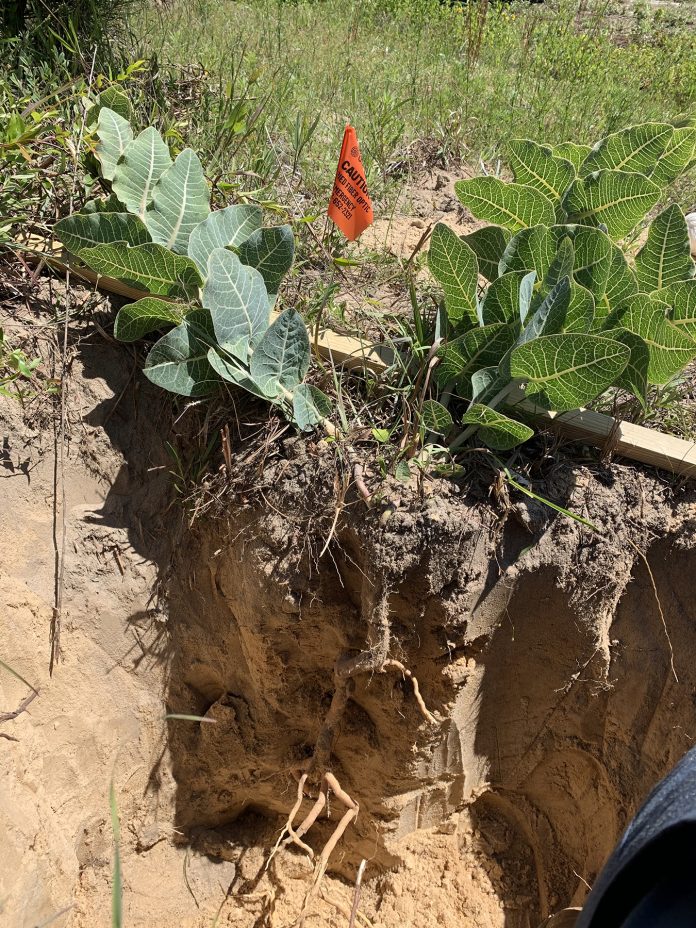For the past month, Lilly Browning, Hernando County Utilities Florida-Friendly Landscaping Program Coordinator, and I showcased some beautiful native wildflowers and flowering plants that thrive in Hernando County.
Luckily these beauties can be found in parks, preserves, wildlife management areas, and environmental areas. But some native plants are not so lucky.
As the Florida population grows, so does the need to expand and widen roads and highways. Unfortunately, many rare and threatened native plant species perish during construction.
In the Florida Panhandle, Florida Department of Transportation (FDOT) has had plans of widening Crawfordville Highway/US 319 from two to four-lanes since 2001. Some of Florida’s unique native wildflowers and plants thrive along the stretch of U.S. 319 from S.R. 30 (U.S. 98) in Wakulla County to just south of Rivers Road in Leon County.
The Florida Native Plant Society (FNPS) is a non-profit group of dedicated volunteers who contribute to the educational and conservation efforts of Florida’s native plants. One of their most important functions is to rescue native plants in danger of destruction.
From May 14 to May 17, 2020 members and volunteers from the FNPS gathered as many native plants and seeds as they could before construction began on US 319 to widen the roadway.
“Some of the plants that have already been lost (from the construction) include several of our native Southern crabapple trees,” said Lilly Anderson-Messec, Vice President Magnolia Chapter Florida Native Plant Society. “However, we were able to save several individuals of native Southern crabapple that were in the path of construction. The main plants I was working on are some of my favorites: our native milkweeds. The native milkweeds in Florida are disappearing, and many of those that remain are found along roadsides due to fire suppression.”
She explained that development and the degradation and loss of habitat are the main causes of why Florida wildflowers like native milkweeds are becoming less abundant. Many of the plants that remain are often found on roadsides and powerlines.
“The mowing done on roadsides and powerlines mimics what fire does for the landscape, which is to take out those competing woody shrubs that would shade out our native grasses and wildflowers,” Anderson-Messec said. “Mowing, though many people may think of it as a bad thing for wildflowers, is actually very beneficial for these plants when done at the right time and frequency. It is necessary right now with the dwindling genetic pool of species, that we save what we have left so that we are able to propagate these plants in a healthy and successful manner to restore these plants to where they once were.”
(Southern crabapple is a flowering shrub with showy pink blossoms. It is a state-threatened species.)
Some of the native plants that were saved consisted of several species of milkweed, including butterfly milkweed and sandhill milkweed. Several species of Florida’s native pawpaws, tickseed, Mexican poppy, and blazing stars also were saved.
“The fewer and fewer individuals we have, the shallower the gene pool gets. That makes the species less adaptable to change. The conservation of these species depends upon a healthy gene pool that is diverse. Saving individual plants, though they may not be rare, is still important for the health of the species as a whole,” Lilly said.
Those four days digging up plants weren’t the only satisfying feeling. It gave FNPS members and volunteers a way to re-connect to nature after being isolated for weeks due to the COVID-19 pandemic. It also allowed volunteers to learn about the root systems of different plants as well as how to remove them safely.
“It felt good. You don’t often get to dig up plants,” Lilly said. “One of the things that is so interesting about digging milkweeds, especially our sandhill species, is their extensive root systems. Some of the ones that we dug out had roots that would go four to five feet deep. Removing them can be an arduous task.”
At this time, the plants and seeds collected are in the care of an FNPS member and will be rehomed to parks and other public lands within the area.
To learn about the FNPS visit their website at https://www.fnps.org/home/ or to become a member of the Hernando Chapter call: (352)-666-3996

